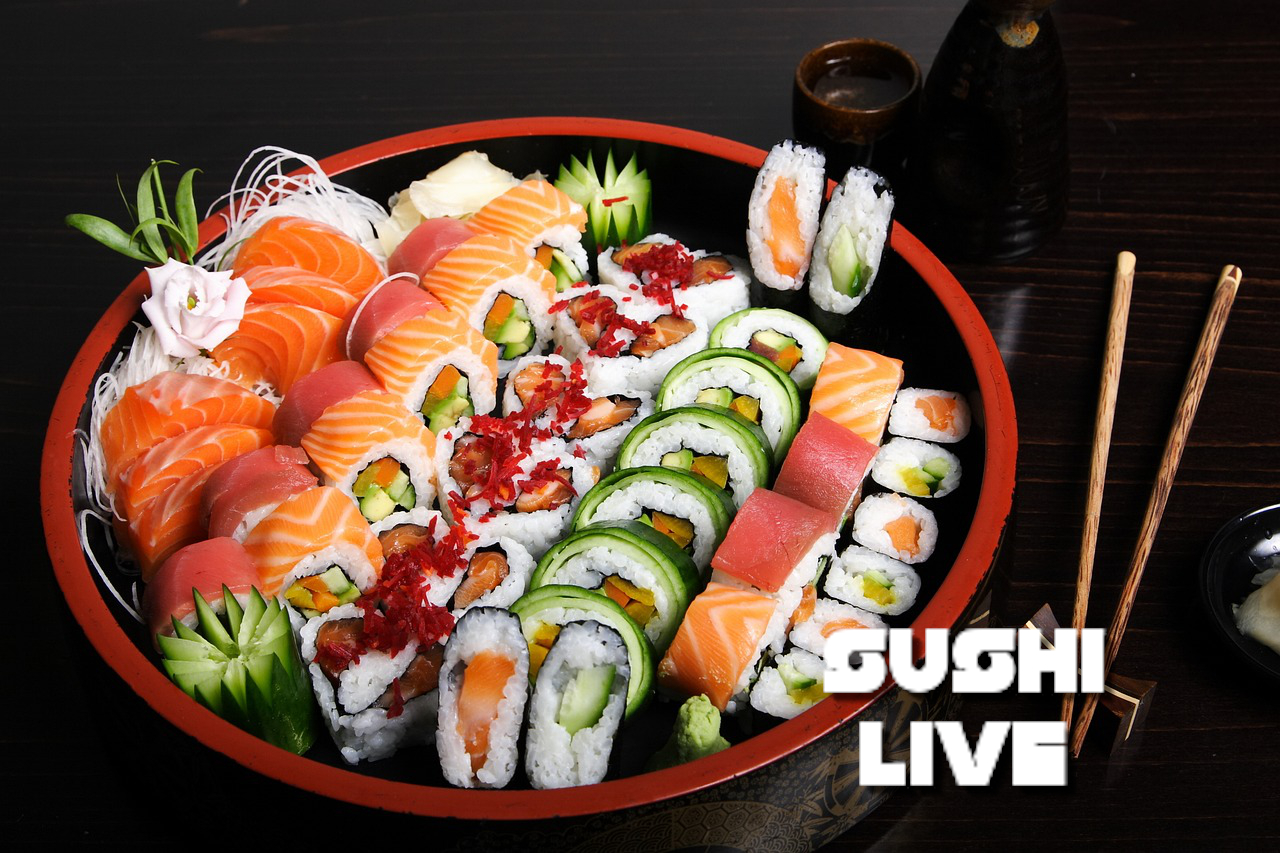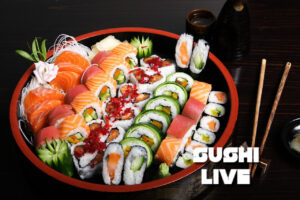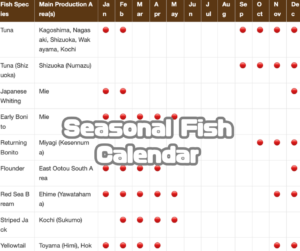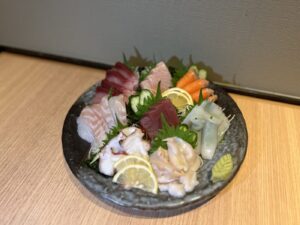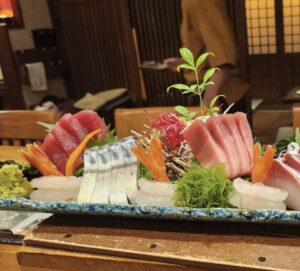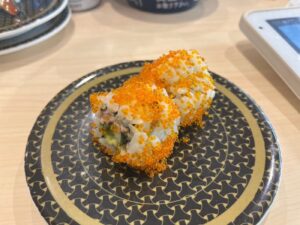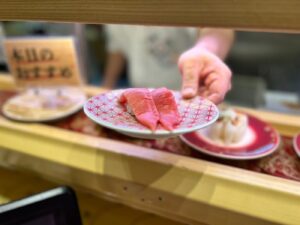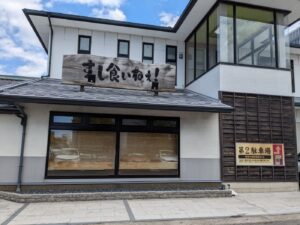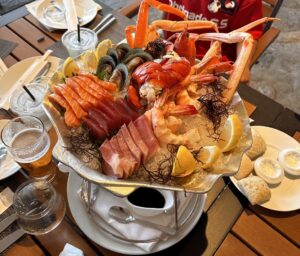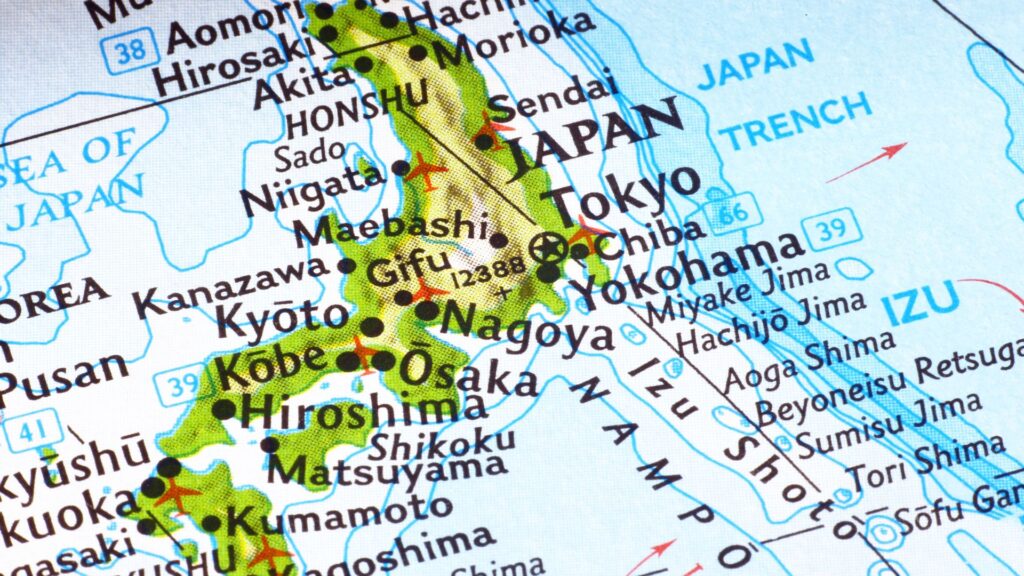
local sushi” that are rooted in each region’s climate and history.
In this article, we will introduce local sushi from all over Japan that is delicious to both the eye and the palate, including local cuisine with a long history and tradition, and sushi that has been passed down as special occasion dishes. We also recommend planning your trip to try local sushi that condenses the rich history and blessings of the land.
Local sushi from Hokkaido and Tohoku
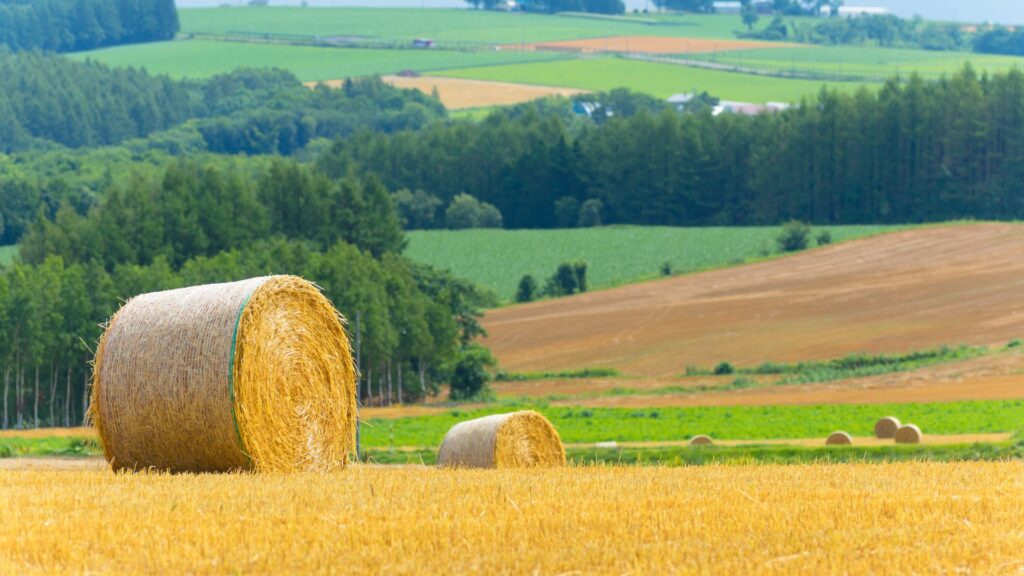
In Hokkaido and Tohoku, sushi made with fresh fish from the northern seas and the bounty of the mountains is a specialty. There are some rare ingredients that you’ll want to try at least once, so be sure to check out seasonal gourmet information when traveling.
Hokkaido Shishamo Sushi
The fishing season is only one and a half months, and this nigiri sushi is made using the rare shishamo, which only grows in Hokkaido. The capelin that is usually sold at the market is a completely different species of fish. Long lines form during the fishing season from January to November in search of the authentic taste. This is truly a local sushi that can only be found in Hokkaido.
Aomori Sushiko
This sushi is said to be “pickled rice” that has been passed down in the Tsugaru region. It is made by adding pickled red shiso, cucumber, cabbage, etc. to steamed sticky rice and fermenting it with lactic acid. It has a bright reddish-purple color and a sweet and sour taste, making it easy to eat even in the summer when people tend to lose their appetite, and it was valued as a preserved food in this area where there are many rice farmers. It is a unique local dish that is still loved by locals.
Iwate Maezawa Beef Nigiri Sushi
A specialty sushi made with melt-in-your-mouth raw meat from one of the three major Wagyu beefs, known as Riku no Toro. This is a new local sushi that was just registered as a patent about 10 years ago.
Akita Hatahata Sushi
Hatahata sushi is a type of “Narezushi” that has been made since an earlier era than nigiri sushi. It is a traditional food made by marinating and fermenting the local sandfish with rice, koji, and vegetables, and is also popular as a snack.
Fukushima Herring Sushi
This Tsuruga delicacy is made by pickling herring unloaded at Tsuruga Port with daikon radish and making it into a preserved food. Because the area is deep in the mountains, they use dried herring. It started in the Edo period and is still loved by people as a delicacy during New Year’s holidays and festivals.
Local sushi from Kanto and Koshin’etsu

Koshin’etsu in the Kanto region is known for its distinctive local sushi, both in areas facing the sea and inland. Other than Edomae sushi, Kanto and Koshin’etsu are characterized by sushi made from mountain ingredients.
Ibaraki Eel Chirashi Sushi
A local dish made with eel caught in Kitaura and Kasumigaura in southern Ibaraki Prefecture. This is a unique chirashi sushi made with potato shells, which have been made as a preserved food since ancient times.
Gunma Rainbow Trout Sushi
Sushi made with rainbow trout meat of different colors: red and white.
Saitama Kirazu Sushi
Healthy sushi that uses okara (kirazu) instead of vinegared rice.
In addition to kirazu sushi in Saitama Prefecture, there is also a rare, elongated sushi called “Menuma no Inarizushi” made in Kumagaya.
Nagano Sasazushi
Sushi wrapped in or placed on bamboo leaves, which have antibacterial properties.
It is said to have been eaten since the Warring States period, and even historical figures have eaten it.
Niigata Salmon Rice Sushi
It is a type of “narezushi” that is made as a New Year’s dish and as a preserved food in winter. Salmon is stacked alternately with vegetables and marinated in rice and koji to ferment.
Tochigi Tawara Sushi
A specialty sushi made from Inari sushi in the shape of a straw bag. It is filling and popular with locals.
Tokyo Edomae Sushi
The representative sushi that everyone knows now. Edomae refers to Tokyo Bay. Traditional Narezushi requires a long period of fermentation, but nigiri sushi, which combines freshly caught seafood with vinegared rice, is a fast food from the Edo period. During the Edo period, it was a casual meal out for the common people.
Local sushi from Tokai and Hokuriku
Toyama prefecture Trout Sushi
A representative type of pressed sushi that is not fermented and is made with fish and rice seasoned with vinegar. Spread bamboo leaves in a round container, and spread beautiful cherry salmon on top of the vinegared rice. It became famous during the Meiji period when it was sold as an ekiben.
Gifu Prefecture Hoba Sushi
Sushi made of chirashi sushi of wild vegetables and fish wrapped in magnolia leaves. It is said that it has a long shelf life due to the sterilizing effects of vinegared rice and magnolia leaves. It originally began as bento boxes that people working in agriculture and forestry could eat without getting their hands dirty. Ingredients include river fish, mackerel, tsukudani, and red ginger.
Fukui Prefecture Koppazushi
Also known as leaf sushi. This sushi is made by wrapping fish seasoned with vinegar and vinegared rice in the leaves of a tree called aburagiri . Koppa sushi has a unique aroma created by the leaves of the tree.
Ishikawa prefecture Turnip Sushi
Narezushi is a preserved winter food made by marinating fatty yellowtail and turnips with koji. “Kabura” means turnip, and is famous as a local dish of Kaga, mainly Kanazawa.
Kinki local sushi
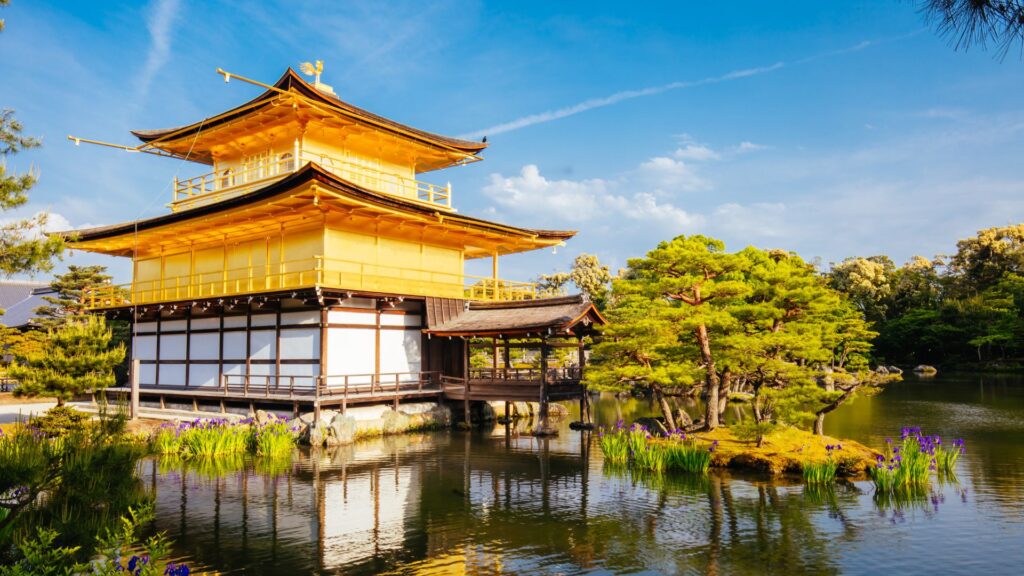
The Kinki region, including Kyoto, is characterized by the fact that many traditional food cultures remain. In Kyoto, mackerel brought from Hokuriku along the Saba Kaido Road was an essential ingredient for sushi at festivals. In the neighboring prefecture of Shiga, Funazushi, which is said to be the root of Japanese sushi, is also made, and each prefecture’s unique local sushi is still popular.
Shiga Prefecture Funazushi
Funa sushi has a unique fermented smell and is a bit of a strange dish, but it is a valuable item among sushi from all over the country that retains the form of “narezushi”, which is the origin of Japanese sushi. We don’t eat rice that has been marinated with fish, we only eat fish.
Mie Prefecture Tekone Sushi
A type of chirashizushi in which fresh fish marinated in soy sauce is placed on vinegared rice and mixed by hand. It originated as a fisherman’s dish and was a special dish eaten during celebrations in the past.
Nara prefecture Persimmon leaf Sushi
It is made by adding lightly salted mackerel to vinegared rice, wrapping it in persimmon leaves, and placing a weight on it. It is a local sushi that is essential for festivals and celebrations and is popular mainly in Nara Prefecture with a history of over 200 years.
Kyoto Mackerel Sushi
Sushi made with mackerel brought from Hokuriku by land route called the Saba Kaido. Dishes born from the history of trade between Kyoto and Hokuriku facing the Sea of Japan are a Kyoto summer tradition.
Wakayama Mehari Sushi
A rare local sushi that does not use vinegared rice or fermentation. It was a portable meal consisting of a rice ball wrapped in pickled mustard greens, and was said to have been a lunch box for woodcutters and mountain workers. It is said to be Japan’s original fast food. Its name comes from the fact that it was originally larger than a man’s fist and ate with its mouth open and eyes wide.
Local sushi from Chugoku and Shikoku
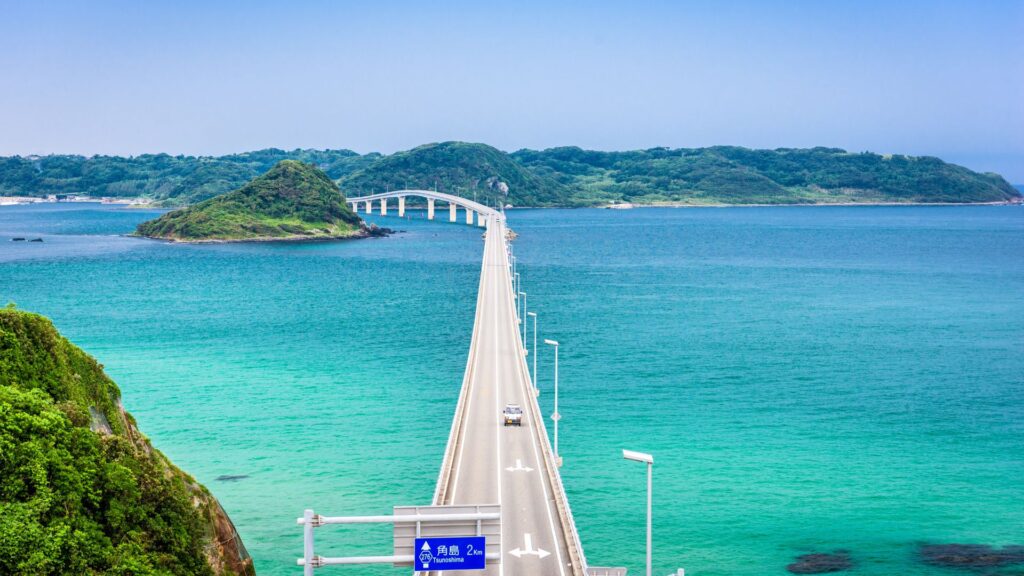
In the Shikoku region and Chugoku region, far from Edo, the tradition of sushi as a preserved food and a dish eaten at celebratory occasions remains strong. While pressed sushi, in which vinegared rice and other ingredients are packed into wooden frames or molds, remains in many places, there are also gorgeous local sushi that uses whole fish and gorgeous ingredients that reflect the rich food culture blessed by the mountains and the sea.
Okayama Prefecture Barasushi
A dish with ingredients mixed into vinegared rice. The idea of making it a la carte dish originated from the feudal lord’s strict frugality ordinance that stipulated one soup and one dish. The luxurious sushi made with the rich ingredients of Okayama, which is blessed with mountains and the sea, can be said to be the result of the rebellious spirit and wisdom of the common people.
Shimane Prefecture Hakozushi
A type of pressed sushi handed down in the Iwami region that uses a square wooden frame. Deep-fried vegetables (shiitake mushrooms, kanpyo, carrots) are sandwiched between vinegared rice, a thin plate is placed in between, the layers are layered, the plates are pressed from above and cut into pieces, and the final dish is decorated with tinsel eggs and green leaves.
Yamaguchi Prefecture Iwakuni Sushi
It is a type of pressed sushi, also known as “Tonosama sushi”, and is characterized by its luxurious appearance and square shape. This is a large box of sushi that uses a large wooden frame that can make 10 servings at a time, with a person standing on top of the lid to push it.
Kagawa Prefecture Kankan Sushi
This is pressed sushi using a wooden frame. It is made by filling a wooden crate with plenty of ingredients and vinegared rice, then tightening the wooden crate. The name comes from the sound of the hammer being hammered in at that time. In the past, it was valued as a preserved food and served as a feast on special occasions.
Tokushima Prefecture Bouze Sushi
A refreshing local sushi made with a whole fish and the local specialty sudachi. Bouze means Ibodai. A must-have sushi for autumn festivals, bouze is soaked in vinegar and shaped by placing it on top of sushi rice with yuzu vinegar added.
Local sushi from Kyushu and Okinawa
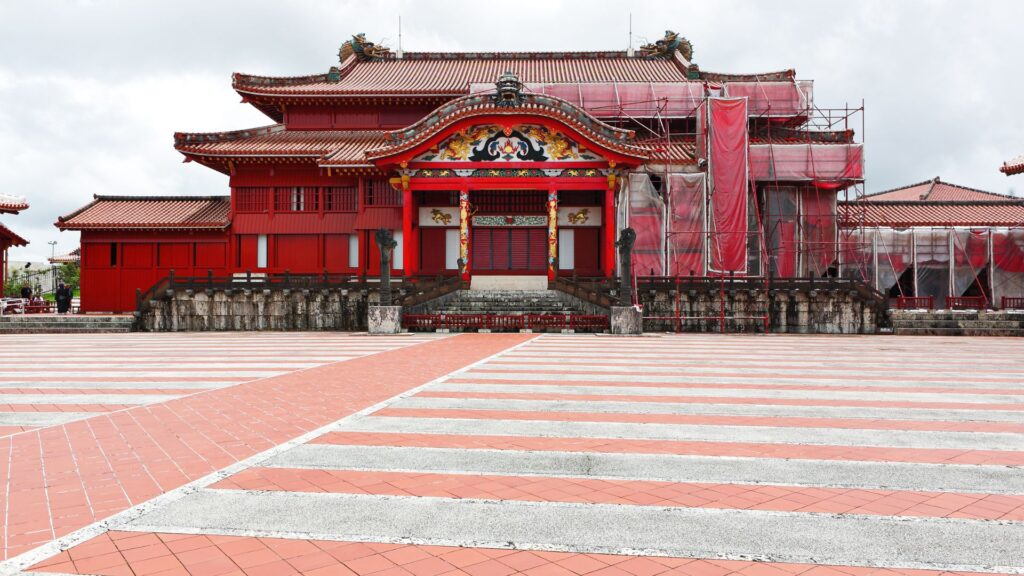
Kyushu and Okinawa, which are far from Edo, are characterized by the influence of southern and continental culture. There are many types of sushi, including sushi that uses sake instead of vinegar. Due in part to the warm climate, the seasoning is sweeter than in the Kansai and Kanto regions.
Kumamoto Prefecture Nankan Fried Sushi Roll
A sushi roll wrapped in deep-fried tofu called Nankanage, which is made in northern Kumamoto Prefecture. Add shiitake mushrooms, kanpyo, spinach, and thick fried egg. It is characterized by its beautiful appearance and unique flavor.
Oita Prefecture Chadai Sushi
A traditional hospitality dish with toppings on both the top and bottom of the sushi. This name comes from the fact that the material below resembles a teacup. During the Edo period, it was made using familiar ingredients such as vegetables in order to be frugal. Local sushi unique to Oita with beautiful colorful vegetables.
Kagoshima prefecture Sake Sushi
A very luxurious and elaborate sushi that uses sake with a sweet and unique flavor called “Aku mochi sake” instead of vinegar. It is made by alternating layers of rice and toppings while sprinkling sake in a special tub. People who don’t like alcohol may be a little hesitant, but it’s definitely a dish you should try when you’re in Kagoshima.
Okinawa Prefecture Daito Sushi
This sushi can be found on Daito Island, where there are many settlers from Hachijo Island, and it is said to have its roots in Shima Sushi, the local sushi of Hachijo Island. Daito sushi is characterized by sushi toppings such as tuna, swordfish, and mackerel marinated in a special sauce, vinegared rice slightly sweetened with sugar, and the basic use is Japanese mustard instead of wasabi. It has a unique flavor that combines sweet and sour rice with a special sauce.
There are many different kinds of traditional sushi all over Japan!
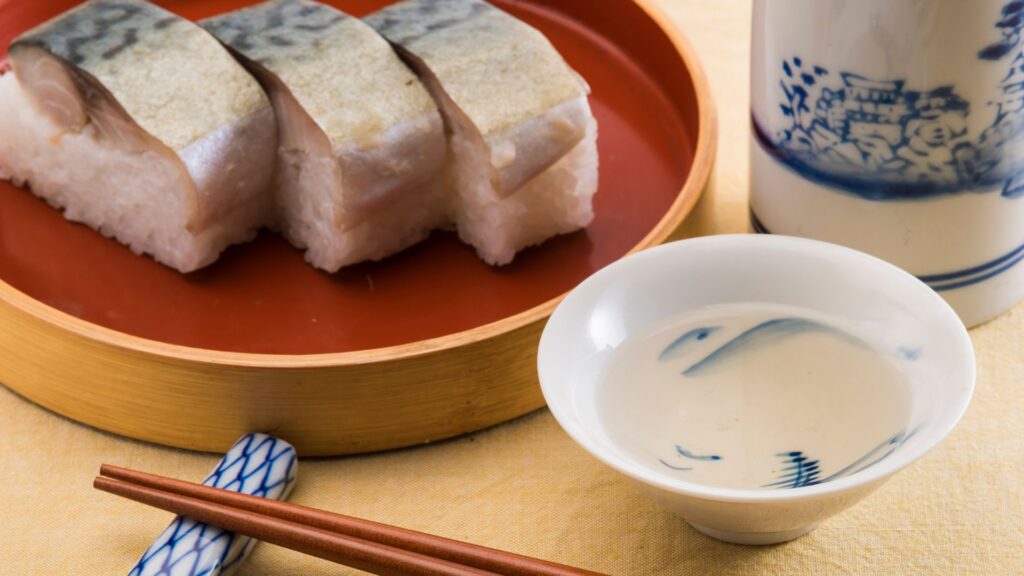
Originally, sushi was a preserved food, as well as a dish eaten at celebratory occasions, using plenty of fish, rice, and a variety of ingredients. It might be a good idea to look for local food that is unfamiliar to you, or it might be a good idea to go on a trip to taste local sushi with a rich regional flavor.

